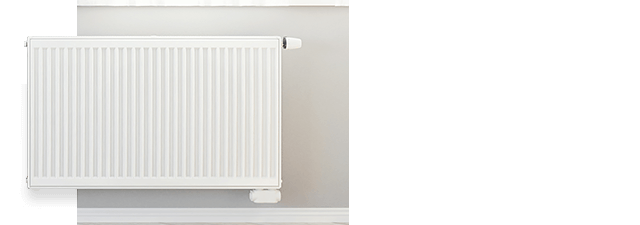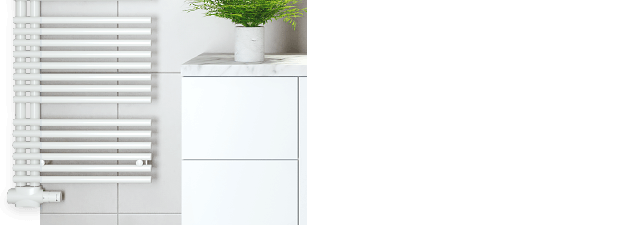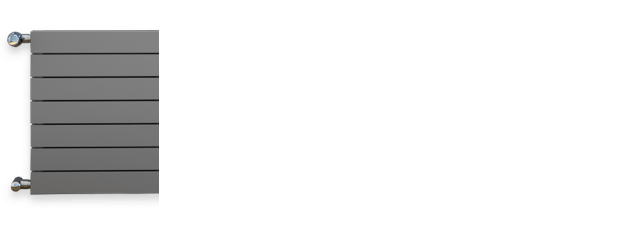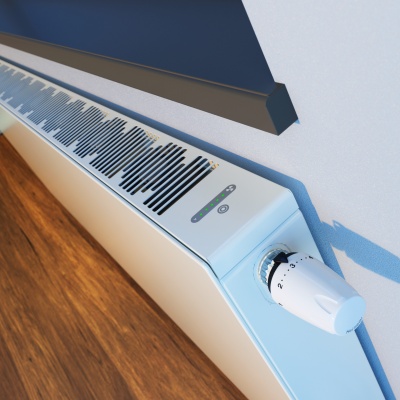How to Install a Plug-In Towel Radiator
6. 6. 2025
How to Connect a Towel Radiator
A towel radiator is not only a stylish bathroom feature, but also a practical source of heat and a handy towel dryer. If you’re planning to install it yourself, it’s essential to follow the correct process and avoid common mistakes. In this guide, we’ll show you how to plumb a radiator for your bathroom—whether it’s connected to the heating system, plugged into a socket, or part of a combined solution.
Before You Start: Types of Towel Radiator Connections
Before you start mounting your plug in towel radiator, decide which type of heating you need. There are three main options:
- Hydronic (central heating) connection – The radiator connects to your existing heating system. It only works during the heating season.
- Electric radiator – Equipped with a heating element, this plug in vertical electric radiator works independently year-round. It’s not connected to the central system, making installation simple and ideal for renovations or extra heating without construction work.
- Combined heating – The most versatile choice, combining the benefits of both electric and hydronic systems.
Each type of heating has its own specifications and slightly different installation steps. However, one thing applies to all of them: if you follow the correct procedure, the result will be reliable and safe.
How to Install a Towel Radiator – Step by Step
While installing a towel radiator is a DIY-friendly project, it requires precision and adherence to safety standards, especially when installing electric or combined models in bathrooms.
Applies to All Radiator Types:
1. Determine the Radiator Position
Measure the space where you want to place your radiator. Make sure it is:
- At least 10–15 cm above the floor
- Easily accessible for hanging towels
- Outside direct water spray zones (e.g., from a shower or tub) according to safety regulations
Use the mounting template (usually included in the packaging) to mark the fixing points.
2. Install the Brackets and Mount the Radiator
Drill holes at the marked points and insert wall plugs. Attach the brackets, place the radiator on them, and secure it with screws. Check for horizontal alignment and stability.
Only for Hydronic or Combined Radiators:
3. Connecting the Radiator to the Central Heating System
If using a hydronic system, the radiator will be integrated into your heating system. The most common option is bottom middle connection (50 mm spacing), but side inlets can also be used. Make sure to correctly connect the supply and return pipes—reversed installation reduces performance.
Examples of Towel Radiator Connections:
- Bottom middle connection

- Dual side top-down connection

- Bottom-down connection

4. Filling and Bleeding the System
After connecting to the pipework, open the water inlet, check for leaks, and bleed the radiator using the air valve. The system pressure should be between 1.2 and 2 bars. Electric towel radiators do not require filling—they are factory-filled with thermal fluid.
Only for Electric or Combined Radiators:
5. Installing the Electric Heating Element (for Combined Models)
Screw the heating element into one of the lower outlets. The installation must always be vertical, with the power cable pointing downward—never upward! Incorrect orientation may cause overheating or damage.
In plug in electric towel radiators, the heating element is often pre-installed and the radiator is factory-filled. These do not connect to any water-based system.
You have two connection options:
- Plug-in models (e.g. tall electric radiator plug in) – simply connect to a power socket
- Hardwired models – must be connected by a licensed electrician
Most Common Mistakes to Avoid
Improper installation can reduce functionality or even compromise safety. Watch out for these common errors:
- Installing the heating element from the top (always install from the bottom)
- Skipping air bleeding
- Reversing the supply and return connections
- Missing shut-off valves in combined systems
- Non-professional electrical installation without RCD (especially in plug in vertical electric radiator systems)
- Trying to connect a fully electric radiator to the heating system—never do this!
KORADO Recommendations
If you’re looking for a towel radiator that’s easy to install, aesthetically pleasing, and reliably efficient, choose from the proven KORALUX range of tube radiators. We offer models for all heating systems types—hydronic, electric, and combined.
Our combined KORALUX models come pre-fitted with a heating element and meet all safety requirements. Every radiator comes with mounting accessories and an easy-to-follow installation manual.
We strongly recommend having your towel radiator installed by a qualified professional—especially when dealing with electrical connections and heating element installation. Still unsure which model is best for your needs? Need help with plumbing or installation? Contact our KORADO support team or visit www.korado.com to find installation guides, product catalogues, and recommended installers.





